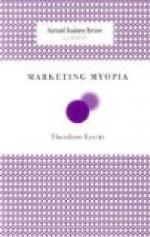Water . . . . . . . . . . . . . . . . . . 1,500 Sugar candy . . . . . . . . . . . . . . . 70 Tartaric acid . . . . . . . . . . . . . . 4 Nitrate of ammonia . . . . . . . . . . . 4 Phosphate of ammonia . . . . . . . . . . 0.6 Carbonate of potassium . . . . . . . . . 0.6 Carbonate of magnesia . . . . . . . . . . 0.4 Sulphate of ammonia . . . . . . . . . . . 0.25 Sulphate of zinc . . . . . . . . . . . . 0.07 Sulphate of iron . . . . . . . . . . . . 0.07 Silicate of potassium . . . . . . . . . . 0.07 —J. Raulin, Paris, Victor Masson, 1870. These pour le doctorat.] may be used in such cases with success.
All the alcoholic ferments are not capable to the same extent of development by means of phosphates, ammoniacal salts, and sugar. There are some whose development is arrested a longer or shorter time before the transformation of all the sugar. In a series of comparative experiments, 200 grammes of sugar-candy being used in each case, we found that whilst saccharomyces pastorianus effected a complete fermentation of the sugar, the caseous ferment did not decompose more than two-thirds, and the ferment we have designated new “High” Ferment not more than one-fifth: and keeping the flasks for a longer time in the oven had no effect in increasing the proportions of sugar fermented in these two last cases.
We conducted a great number of fermentations in mineral media, in consequence of a circumstance which it may be interesting to mention here. A person who was working in our laboratory asserted that the success of our experiments depended upon the impurity of the sugar-candy which we employed, and that if this sugar had been pure—much purer than was the ordinary, white, commercial sugar-candy, which up to that time we had always used—the ferment could not have multiplied. The persistent objections of our friend, and our desire to convince him, caused us to repeat all our previous experiments on the subject, using sugar of great purity, which had been specially prepared for us, with the utmost care, by a skilful confectioner, Seugnot. The result only confirmed our former conclusions. Even this did not satisfy our obstinate friend, who went to the trouble of preparing some pure sugar for himself, in little crystals, by repeated crystallizations of carefully selected commercial sugar-candy; he then repeated our experiments himself. This time his doubts were overcome. It even happened that the fermentations with the perfectly pure sugar instead of being slow were very active, when compared with those which we had conducted with, the commercial sugar-candy.
We may here add a few words on the non-transformation of yeast into penicillium glaucum.




